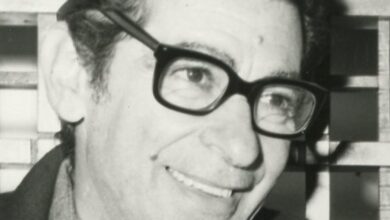International film festivals are somewhat about pride in your country, and no film in the festival thus far has featured its home terrain more than Switzerland’s “Sauvage”, starring Jean-Luc Bideau and directed by Jean-Pierre Améris. The film shows the crossing of two gray city bridges over placid water, the glittering Geneva skyline at night, and, most of all, the brutal, snowy crags of the wintertime Alps. Switzerland provides an evocative panorama for which, one hopes, the filmmaker feels great affection. If he doesn’t, he’s out of luck: the landscape is the only interesting thing about “Sauvage.”
The film tracks Adrian Lagovica, a young Swiss woman, as she graduates from petty, forgivable crime to the heist of the century: a Fabergé egg designed exclusively for Tsar Nicholas Romanov. As soon as Adrian lifts the blue and silver object out of its nest, alarms sound and she and her impeccably-trained Rottweiler, Narco, make a run for it.
Adrian–a brooding brunette played mostly by a hooded sweatshirt and the actor’s cheekbones–takes off for the border in her car, a silver, graffiti-covered vehicle that looks like an apocalypse-ready mail van. On the way, Narco snacks on some road kill, a scene which both introduces the film’s head-on approach to petty gore and Adrian’s reaction to it, a blank stare that might have intended to project a sociopath’s remove but instead previews the character’s defining resemblance to a spoiled child. Wolves howl in the background as Adrian and Narco fall asleep, parked on a mountain road after their first tough day on the lam.
Narco’s next meal–a mountain goat whose entrails the dog slurps happily in the snow–will be his last. The dog is shot when he refuses to give up his breakfast, the property of a hunter who lives alone in the barren mountains with a notable collection of paperbacks, a notable photo of an absent family, his rifle, and a regenerating hunk of perfect country bread that affords his stone cottage the appearance of a Dutch still-life.
Narco’s shooting makes Adrian mad. She quickly deduces who is responsible and sneaks into the hunter’s cottage, waking him up by pointing his rifle at his head. Unsurprisingly, he is able to wrestle it away from her. It is indicative of the unimaginative writing that the fact that the hunter mistakes Adrian for his long-lost daughter–and that she goes along with the charade, and that there is no fallout when he discovers the truth, and that the estrangement from
his family is the result of an accident for which he feels responsible, and that the accident is clearly not his fault–is utterly unsurprising.
In fact, there is nothing about “Sauvage” that strays from boilerplate, as much as the filmmaker tries. When, at the dinner table, the hunter requests that Adrian “eat properly” and she responds by shoveling food into her mouth with her hands, the message is all too clear: the she-wolf that roams the snowy mountains outside is a force that, try as we might, we can never fully civilize ourselves against.
A scene in which the hunter asks Adrian to shave her neck is not tense, as much as it makes one hopeful for a swift ending.
Adrian, it should be noted, is an artist. Her drawings mostly resemble those that might be produced in an art therapy class in which the prompt is “draw your anger”: hands clawing out of a brick wall are a prominent motif. A final scene features Adrian’s large, wooden sculptures–wolves howling on a public beach where she abandons (or “installs”) them. It’s an apt symbol, certainly, but presumably not in the way the filmmaker intended. Rather than indicating that Adrian is free and more at peace because she has learned how to channel her savageness, it seems to illustrate how a less-than-stellar piece of art can ruin a stunning outdoor scene, which is, in the end, what “Sauvage” does.



